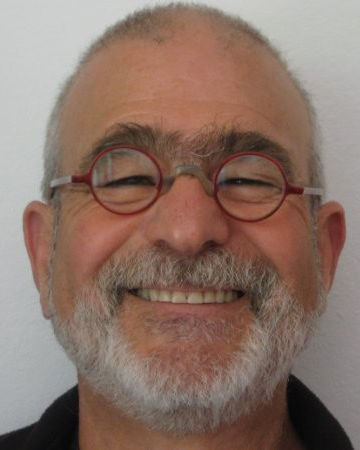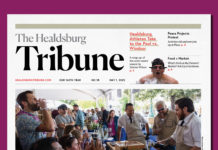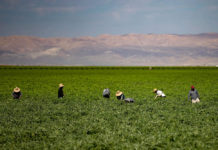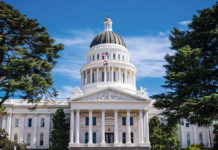When we look at Healdsburg today, how did it become what we see? Harmon Heald gave us an incredible gift when he placed the Plaza in the center of his town. People suggest the American Institute of Architects (AIA) R/UDAT study of 1982 turned the city toward tourism and wine.
That is only partially true. How did the city prepare, embrace, and implement the suggestions from that team of experts? The Tribune online archives for “R/UDAT” had 102 mentions between January of 1982 and 1989; none after.
I have edited or shamelessly copied from those reports and editorials to make this collage of how “where we are” may have been influenced by the R/UDAT. The upcoming SDAT (Sustainable Design Assessment Team) can help us know where to go next.
In late 1981, a group of residents formed a steering committee to consider Healdsburg’s future. The city was not thriving. Activities stimulated by this group included a wine symposium at the Villa Chanticleer in February of 1982 and an invitation to the state’s tourism bureau to speak to city government and the chamber of commerce. And then a local architect suggested applying for a R/UDAT — a visit from the AIA’s Regional/Urban Design Assistance Team.
In January 1982, the steering committee asked city officials to investigate a R/UDAT to study Healdsburg and produce a plan for urban revitalization. In March, city officials submitted an application. The steering committee was expanded and a non-stop series of meetings with merchants, officials and residents was launched in April.
A scout from the AIA came in May. In his conversations with locals, he heard repeated comments about a lack of “confidence” and “lack of direction.” He perceived a “lack of process” for making decisions, and he suggested something special be done with the Plaza because its development would set the tone for the entire downtown.
The editor of the Tribune voiced caution, noting that “some of our fondest hopes conflict.” Some wanted to see more shopping opportunities in town so fewer dollars escaped to Santa Rosa, but there were also many who wanted to “preserve our small-town charm.”
In July the AIA approved an October R/UDAT and sent the team leader to Healdsburg. Asked if the Plaza would be the R/UDAT’s top priority, he said that “deciding on a No. 1 priority is probably our No. 1 priority.” He also noted they’d be remiss if they didn’t look at other things besides the downtown.
The editor warned, “Residents who like Healdsburg the way it is may be wary of R/UDAT, regarding it as an instrument of change. R/UDAT will leave behind a comprehensive document to address what our community needs and how we might fulfill those needs. Nothing will be changed unless or until we, the citizens, decide to do it. It will be a call to action, a rallying cry for Healdsburg residents to come together and talk about the future.”
On Friday, October 8, 1982 the team began their work, after a reception at Simi Winery the evening before. Over the next three days they met in various configurations with residents, council members and city staff. By noon Monday, they delivered their report to the printer for distribution in the Tribune.
In the paper of October 13 the report was quoted. The team began by asking‚ “What’s going on … what’s likely to happen here? … The city can choose among several courses: developing into a commuter community; attracting big high technology industry; or expanding the commercial base to serve tourism.”
One member drew “a green network to extend the influence” of the Plaza. It illustrated a revamped Plaza, as the center of several pedestrian spines connecting outward. Two team members described the proposed Hispanic cultural center as a place that would meet the needs of the Mexican-American community to gather.
Reviewing the R/UDAT findings, the editor thought the developer of the Mill Street shopping center would be surprised by the proposed new orientation. A site plan for the shopping center, approved by the council in April, differed significantly from that suggested in the report. The R/UDAT plan showed the shopping center buildings facing Mill Street and the freeway.
The editor wondered, if the developer balks, will the planning commission and council cave in? “We hope not,” he wrote.
They caved. A site plan for the shopping center, approved by the council in April, differed significantly from that suggested in the report. The R/UDAT plan showed the shopping center buildings facing Mill Street and the freeway.
The city council officially endorsed the general concepts of the R/UDAT report in late October. City staff and council members went on a retreat to study and prioritize the recommendations. The city manager identified recommendations under five general goals: strengthening the economy; maintaining small town quality of life; providing recreational facilities for all; providing housing opportunities for all; and maintaining high quality public services.
They returned from the coast with 10 goals, emphasizing continued community involvement. As you walk around town today can you see: 1. A hotel on the west side of the Plaza; 2. A loop road running just west of the railroad tracks between Mill and Piper streets; 3. Community involvement; 4. Foss Creek improvement; 5. Redefinition of boundaries for the downtown business core area; 6. Redefinition of uses allowed in the downtown core; 7. A specific plan for commercial development in the Dry Creek Road Highway 101 area aimed at serving Lake Sonoma visitors; 8. Promotion of the city, particularly as a tourist destination; 9. Downtown rehabilitation; 10. Architectural guidelines for new development.
The mayor said, “The charge to us now is the implementation of R/UDAT.”
In November, 1982 an editorial cautioned against expanding the downtown commercial core. “If downtown is to be developed to serve tourists, it should remain compact. And if ‘small town charm’ is to be preserved, older residential areas should not be eroded.”
The planning commission and city council have wrestled with such issues one at a time, read the editorial, “like blind creatures bumping from obstacle to obstacle. With R/UDAT-related policies established, decision-makers have a vision enabling them to walk a much straighter line. Healdsburg would become a city that knows where it is going, instead of one that hopes it gets there.”
A new commercial zoning ordinance tailored for property fronting on the Plaza was approved by the planning commission, but generated concerns. It was felt the new plaza retail (PR) zone could diminish the value of several existing business properties. Designed to promote pedestrian shopping activity, businesses were concerned about the change.
The city council ignored protests of the planning commission, R/UDAT and hundreds of city petitioners when they approved a 7-11 store. But, under the zoning rules, a convenience stored was an allowed use on the property at Powell Street and Healdsburg Avenue.
In December 1984 the editor made a trip to Carmel and noted, “Some locals fear that redevelopment and R/UDAT will turn Healdsburg into another Carmel. Not to worry. This town has light years to go before it looks like Carmel. In one short block, I saw four cars parked: three were Mercedes.”
Have we traveled those “light years” in just 34 calendar years?
In December of 1988, a letter to the editor asked “HOW KUM the present council has completely ignored the R/UDAT recommendation that an El Centro Cultural meeting place be developed for the growing and important Hispanic population of our fair city?”
The R/UDAT suggestions were remembered, but fading, six years after the team’s departure.
This is just a scattershot view of how Healdsburg, as reported in the Tribune, invited, welcomed, engaged, listened and implemented the recommendations of the 1982 AIA R/UDAT study.
Next week, we have another opportunity to explore future directions for the city. That is what the SDAT will do. On Monday evening, August 13, come to the high school gym at 6 p.m. to share your hopes, dreams and concerns.
Two nights later, at the gym at 6 p.m., listen as the seven visiting experts share their suggestions, focused on Healdsburg becoming sustainable, resilient and responsive to the inevitable changes of the next few decades.
Richard Burg is a member of the steering committee that invited the AIA SDAT team to Healdsburg.









